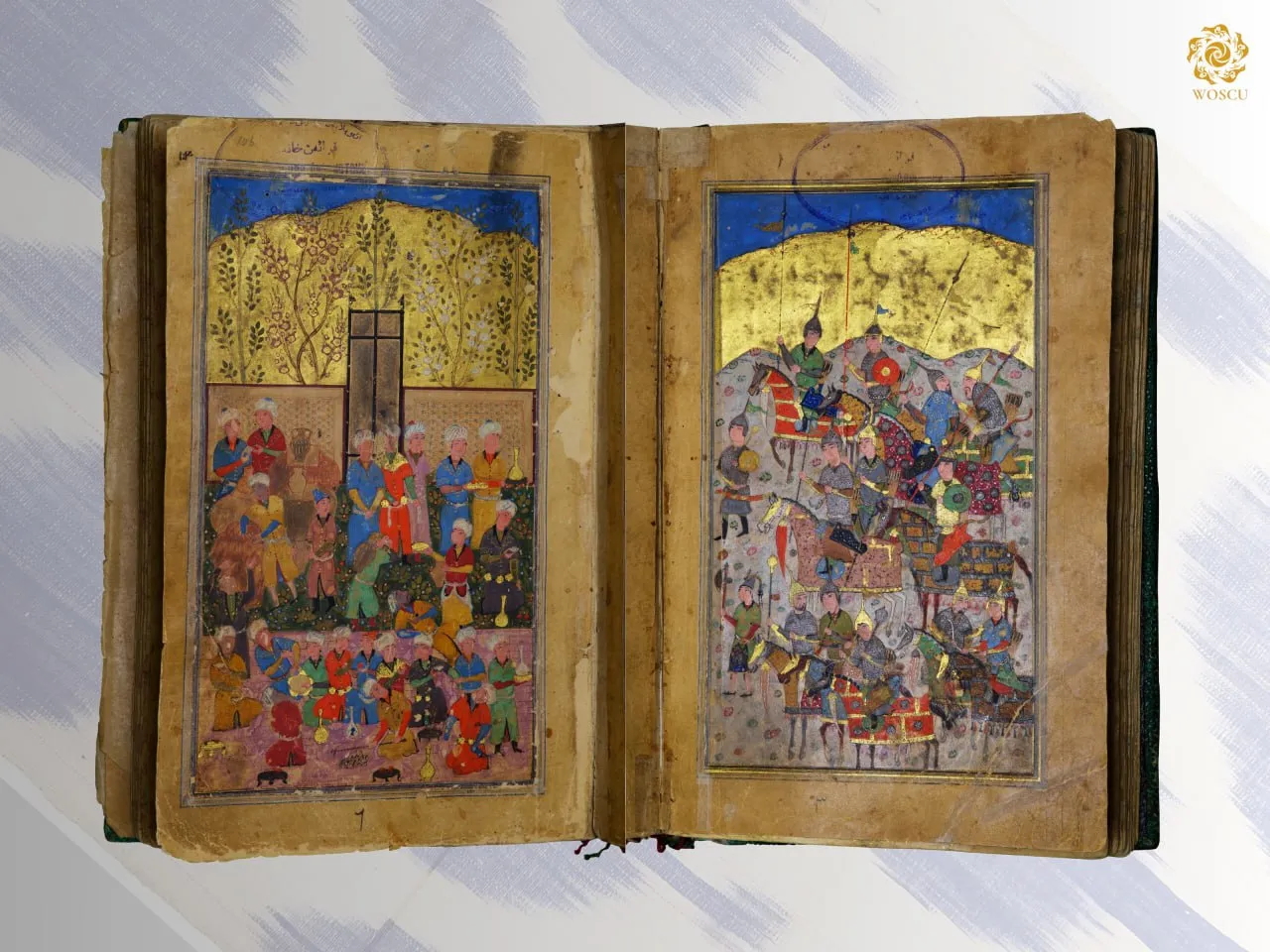
Alongside highly skilled and creative artists producing masterpieces, there worked diligent, but mediocre artists imitating existing compositions. The miniatures in the manuscript Inventory No. 2102 “Zafar-nama” by Khatifi, 976 AH/1568 can be considered an example of the former, and the poem “Laili wa Majnun” by the same author Inventory No. 1775, copied by the calligrapher Khwaji Muhammad Bukhari in 1008 AH/1599 – 1600 exemplifies the latter.
“Zafar-nama” is a big manuscript copied by the expert calligrapher Ali-Reza. He left the double folios for a miniaturist to draw large scenes with many figures glorifying the military and political deeds of Amir Timur. There are three such diptychs. One of them shows cavalry preparing to start an expedition, another one depicts the capture of a town and the third portrays a victory feast. All of them contain characters in static postures and motionless horses; the elements of architecture are one dimensional (a fortress gate, a garden fence with a gate) and even flowering trees do not bend their branches but are extended vertically. The miniatures have pretensions to pomposity that is true to the spirit of the work, but the miniaturist fails to reach a solution by the means of the miniature.
The miniatures of “Laili wa Majnun” are the result of rather unrefined work with its poor draughtsmanship and sharp details in the landscape – clouds, flowers in a glade. Such miniatures provide a background that contrasts with and highlights the masterpieces of the Central Asian miniature art, created in the studios of Bukhara, Samarkand and Shahruhiya, and also prove the involvement of artists of different abilities in the decoration of the manuscripts. Some of them met the requirements of court life and fine experts, the others worked for the market sales.
The miniatures by the artist Muhammad Murad Samarkandi in the manuscript “Shah-nama” Inventory No. 1811 expose the contrast with such featureless products. The “Shah-nama” was copied by the calligrapher Hamdami in 969 AH/1556 for Ish-Muhammad, the ruler of Khiva.
You can learn more about this topic in the book-album “The Collection of the Al-Biruni Institute of Oriental studies, the Academy of Sciences of the Republic of Uzbekistan” (part five, “Miniature and Calligraphy”) (Volume XXV) from the series "The Cultural Legacy of Uzbekistan".
The main sponsor of the project is the oilfield services company Eriell-Group.
